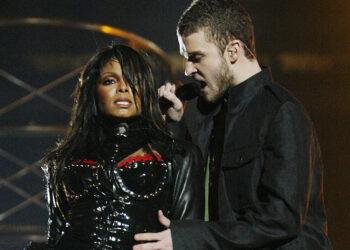 Check the antifreeze, grab the mittens, make sure the airport’s not snowed in.
Check the antifreeze, grab the mittens, make sure the airport’s not snowed in.
We’re going to the Super Bowl.
In New Jersey. In February!
NFL owners voted Tuesday to put the 2014 Super Bowl in the new $1.6 billion Meadowlands Stadium that this season will become home to the New York Jets and Giants. It’s the first time the league has gone to a cold weather site that doesn’t have a dome and, until now, those places couldn’t even bid on the big game.
The league made an exception for the New York area, and New York only. But just a few years ago, the NHL experimented with an outdoor game on New Year’s Day, and it was such a success that teams now fight to host what’s become an annual event.
“We believe the owners have the faith in us that 3½ years from now we’ll put on a remarkable event,” Giants co-owner Jonathan Tisch said on the NFL Network. “The greatest game in the world will be played on the greatest stage in the world.”
For all the hoopla on putting the Super Bowl in the Big Apple, it wasn’t a slam-dunk. It took four votes by NFL owners to pick New Jersey over two Florida cities, Miami and Tampa. Miami was eliminated after the second ballot.
If the NFL decides to wait and see how this foray into the great outdoors in winter goes, it could be until about 2019 or 2020 to try again because it takes a year or two to put together a bid for a game that’s another four years away.
The slogan for New York’s bid is “Make Some History.” The first piece likely to be made is a record-low temperature at kickoff. The current record is 39 degrees in 1972 at Tulane Stadium in New Orleans, and that would be considered a warm February day in East Rutherford, N.J.
There’s never been snow in a Super Bowl game and that could happen, too.
The average temperature range for the Meadowlands area during February is 24 to 40 degrees, with several inches of rain, according to the bid documents. Remember, the game kicks off after sunset in the Eastern time zone, so temperatures would be dropping throughout the night.
Planners have factored it all in. They’re plotting giveaways to warm hands and seats, having hundreds of folks ready to shovel away snow and anything else they can do to make the experience more than just bearable.
For all the inconvenience to those in the stadium, it might look great on TV.
Think of all the shots from the “Ice Bowl” with steam coming out of players’ mouths. More recently, there was the snowy game in New England that became known for the “Tuck Rule.”
Of course, this game also will have the glitz and spectacle that comes with being just outside New York City — like having the Manhattan skyline in the distance. There were cheers in Times Square as the decision was announced on jumbo-screen TVs.
Jets owner Woody Johnson wasted no time in raising the possibility of a Jets-Giants showdown in four years.
“We’ll try to be in that Super Bowl together,” he said, then turned to Tisch. “Am I right?”
Being in the big city will give the league a chance to try making the big game even bigger, if that’s even possible. Buildup will include everything from a float in the Macy’s Thanksgiving Day parade to parties at internationally renowned destinations.
The flip side is that security will become a bigger issue, perhaps among the most expensive pieces of the budget. An expected economic impact of $550 million would help offset some of the cost.
Still, it’s the weather that makes this decision so significant.
The NFL traditionally has required an average temperature of 50 degrees or a dome for a team to bid on hosting the Super Bowl. The rule was made for the comfort and convenience of fans and players. Anyone who has ever planned an outdoor event can appreciate how much of a relief it is to not worry about the weather. Neutral conditions, like those in a dome, also are supposed to help the caliber of play.
It’s been at least 57 degrees for every Super Bowl since 1975, when it was 46. Both that game and the record-low in ‘72 were in New Orleans, before the Superdome opened.
Something else to consider is that hosting a Super Bowl involves a lot more than the game itself. The week before is filled with practices, parties and the league’s popular “NFL Experience,” a carnival-like event with games, souvenirs and much more.
Florida, California and domed stadiums were part of an informal rotation for many years. With more cities building big, expensive stadiums, more places want their turn to host.
Yet some places with new or newly renovated facilities haven’t even had a chance to bid before because of their weather, such as Washington, Philadelphia, Chicago, New England, Seattle, Denver and Green Bay. Surely they will use this precedent to change, or at least loosen, the 50-degree rule for Super Bowl bids.
The upcoming Super Bowl, in February 2011, will be at Cowboys Stadium, followed by Indianapolis’ new stadium in 2012 and a 2013 return to the Superdome for the first time since Hurricane Katrina ripped off part of the roof.
For now, a question: Anybody have a 1,300-day forecast?








